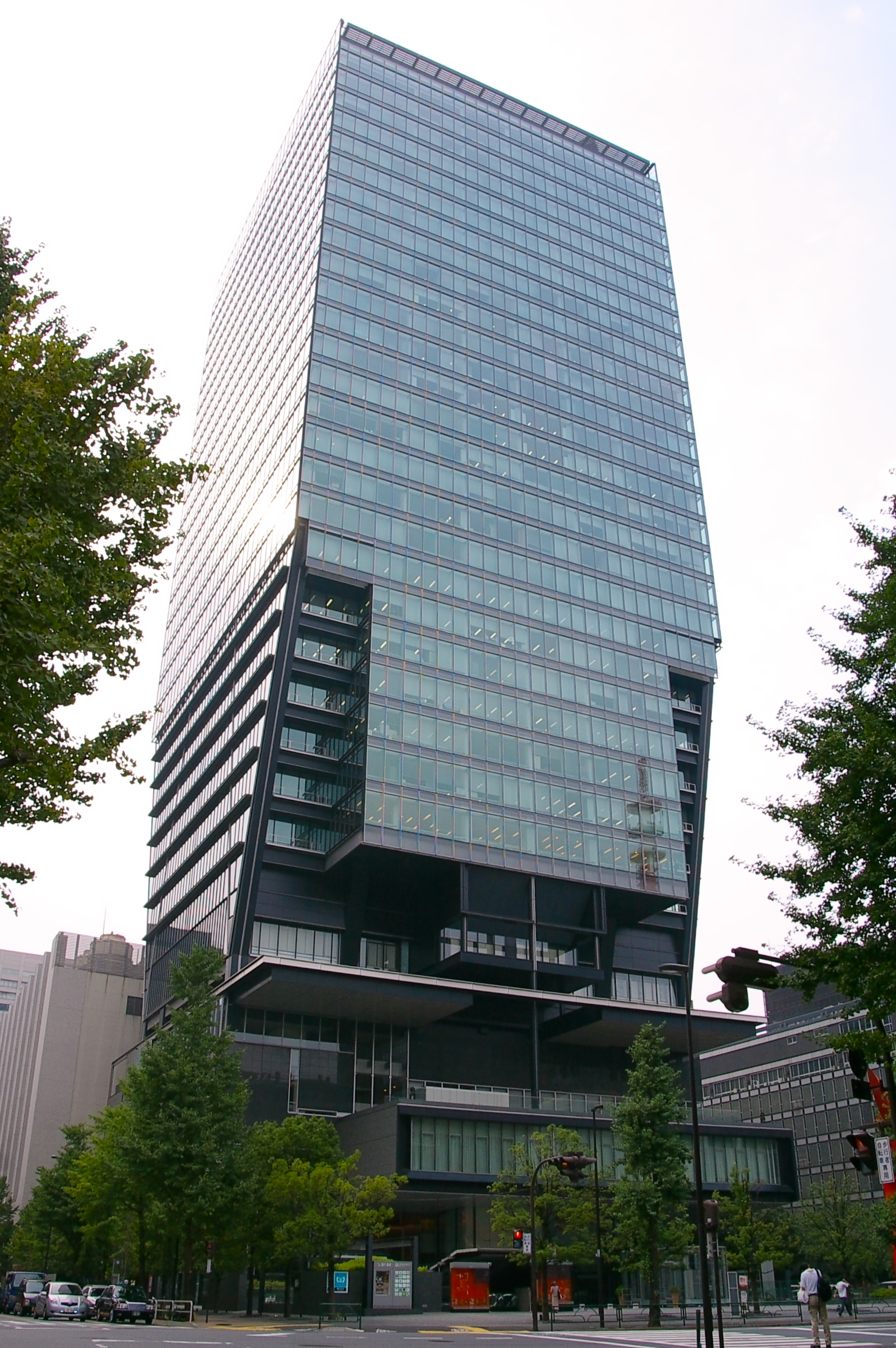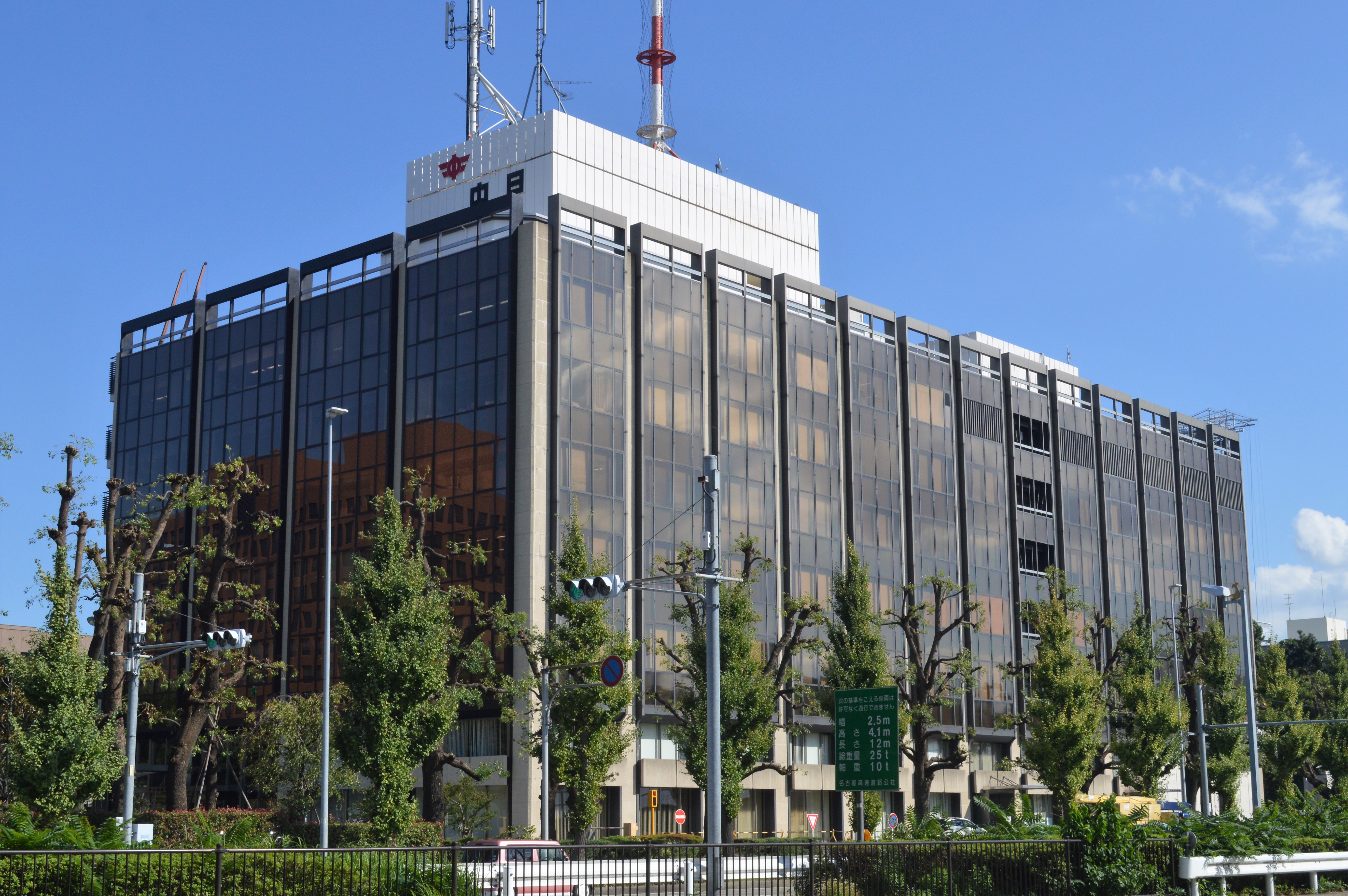|
Sankei
The (short for ) is a daily newspaper in Japan published by the It has the seventh-highest circulation for regional newspapers in Japan. Among Japanese newspapers, the circulation is second only to '' Yomiuri Shimbun'', Seikyo Shimbun, '' Asahi Shimbun'', '' Chunichi Shimbun'', '' Mainichi Shimbun'', ''the Nikkei'', Nikkan Gendai, and Tokyo Sports. This newspaper is not actually a national newspaper, but a block newspaper whose publishing area is Kansai and Kanto. However, it was classified as a "national newspaper" by the reverse course policy of the business world ( Keidanren). Corporate profile The ''Sankei Shimbun'' is part of the Fujisankei Communications Group and is 40% owned by Fuji Media Holdings. The company is also the owner of Osaka Broadcasting Corporation (OBC, Radio Osaka). History The ''Sankei Shimbun'' was created by the merger of two older newspapers: ''Jiji News'' and ''Nihon Kogyō Shimbun''. ''Jiji News'' was founded in 1882 by author, translator ... [...More Info...] [...Related Items...] OR: [Wikipedia] [Google] [Baidu] |
Fujisankei Communications Group
, abbreviated FCG, is a keiretsu in Japan. In 1991, it was the fourth-largest media company in the world and the largest one in Japan. In the same year, the company's yearly revenue was $5 billion. Many of its affiliates are owned by Fuji Media Holdings, itself a member of the Fujisankei Communications Group. The Fujisankei Communications Group was created in 1967 as part of an agreement between the radio stations Nippon Broadcasting System and Nippon Cultural Broadcasting, the television broadcaster Fuji Television and the newspaper Sankei Shimbun. This media conglomerate was founded by Nobutaka Shikanai. "Fujisankei" is a portmanteau of Fuji Television and Sankei Shimbun. In October 1989, Fujisankei Communications paid former United States president Ronald Reagan $2 million to help the company with public relations. Reagan toured Japan for nine days and made two speeches. In 1991, Fujisankei Communications spent $50 million to found the Fujisankei California Entertainment ... [...More Info...] [...Related Items...] OR: [Wikipedia] [Google] [Baidu] |
Osaka Broadcasting Corporation
is an AM radio station of National Radio Network (NRN) in Osaka, Japan, and it is known as "Radio Osaka (ラジオ大阪 ''Rajio Ōsaka'')". It is also a company of Sankei Shimbun Group in Fujisankei Communications Group. Radio Osaka started broadcasting on July 1, 1958. Offices of Radio Osaka *The Headquarters - ORC200, 2-4, Benten Itchome, Minato-ku, Osaka, Osaka Prefecture, Japan *Tokyo office - Musashi 7 Building, 2-4, Ginza Nanachome, Chūō, Tokyo Changing Frequency of Radio Osaka *1958 - 1971: 1380 kHz, 3 kW *1971 - 1978: 1310 kHz, 50 kW *1978–Present: 1314 kHz, 50 kW Broadcasting JOUF *Osaka - 1314 kHz, 50 kW; 91.9 MHz FM *Kyoto - 1314 kHz, 300W *Total:50.3 kW to 55 kW Time signal 880 Hz ( A5) Supplement *The "OBC Song (OBCソング)" (lyrics by Akiyuki Nosaka (野坂 昭如), music by Taku Izumi (いずみ たく)) is Japan's first commercial broadcasting station's song produced in 1961. *The ... [...More Info...] [...Related Items...] OR: [Wikipedia] [Google] [Baidu] |
Mainichi Shimbun
The is one of the major newspapers in Japan, published by In addition to the ''Mainichi Shimbun'', which is printed twice a day in several local editions, Mainichi also operates an English language news website called ''The Mainichi'' (previously ''Mainichi Daily News''), and publishes a bilingual news magazine, ''Mainichi Weekly''. It also publishes paperbacks, books and other magazines, including a weekly news magazine, ''Sunday Mainichi''. It is one of the four national newspapers in Japan; the other three are the ''Asahi Shimbun'', the '' Yomiuri Shimbun'' and the '' Nihon Keizai Shimbun''. The Sankei Shimbun and The '' Chunichi Shimbun'' are not currently in the position of a national newspaper despite a large circulation for the both respectively. History The history of the ''Mainichi Shinbun'' began with the founding of two papers during the Meiji period. The '' Tokyo Nichi Nichi Shimbun'' was founded first, in 1872. The ''Mainichi'' claims that it is the oldest ex ... [...More Info...] [...Related Items...] OR: [Wikipedia] [Google] [Baidu] |
Newspapers In Japan
Japanese newspapers ( , or older spelling ), similar to their worldwide counterparts, run the gamut from general news-oriented papers to special-interest newspapers devoted to economics, sports, literature, industry, and trade. Newspapers are circulated either nationally, by region (such as Kantō or Kansai), by each prefecture, or by each city. Some newspapers publish as often as two times a day (morning and evening editions) while others publish weekly, monthly, quarterly, or even yearly. The five leading national daily newspapers in Japan are the ''Asahi Shimbun'', ''Mainichi Shimbun'', the ''Yomiuri Shimbun'', '' Sankei Shimbun'' and the '' Nikkei Shimbun''. The first two are generally considered liberal/left-leaning while the latter three are considered conservative/right-leaning. The most popular national daily English-language newspaper in Japan is ''The Japan Times''. The majority of the newspaper articles are printed vertically. Brief history Japanese newspapers ... [...More Info...] [...Related Items...] OR: [Wikipedia] [Google] [Baidu] |
Fuji TV
JOCX-DTV (channel 8), branded as and colloquially known as CX, is a Japanese television station based in Odaiba, Minato, Tokyo, Japan. Owned and operated by the it is the key station of the Fuji News Network (FNN) and the Fuji Network System. It is also known for its long-time slogan, ''"If it's not fun, it's not TV!"'' Fuji Television also operates three premium television stations, known as "Fuji TV One" ("Fuji TV 739"—sports/variety, including all Tokyo Yakult Swallows home games), "Fuji TV Two" ("Fuji TV 721"—drama/anime), and "Fuji TV Next" ("Fuji TV CSHD"—live premium shows) (called together as "Fuji TV OneTwoNext"), all available in high-definition. Fuji Television is owned by , a certified broadcasting holding company under the Japanese Broadcasting Act, and affiliated with the Fujisankei Communications Group. The current Fuji Television was established in October 2008. Fuji Media Holdings is the former Fuji Television founded in 1957. Offices The hea ... [...More Info...] [...Related Items...] OR: [Wikipedia] [Google] [Baidu] |
Fuji Television
JOCX-DTV (channel 8), branded as and colloquially known as CX, is a Japanese television station based in Odaiba, Minato, Tokyo, Japan. Owned and operated by the it is the key station of the Fuji News Network (FNN) and the Fuji Network System. It is also known for its long-time slogan, ''"If it's not fun, it's not TV!"'' Fuji Television also operates three premium television stations, known as "Fuji TV One" ("Fuji TV 739"—sports/variety, including all Tokyo Yakult Swallows home games), "Fuji TV Two" ("Fuji TV 721"—drama/anime), and "Fuji TV Next" ("Fuji TV CSHD"—live premium shows) (called together as "Fuji TV OneTwoNext"), all available in high-definition. Fuji Television is owned by , a certified broadcasting holding company under the Japanese Broadcasting Act, and affiliated with the Fujisankei Communications Group. The current Fuji Television was established in October 2008. Fuji Media Holdings is the former Fuji Television founded in 1957. Offices The h ... [...More Info...] [...Related Items...] OR: [Wikipedia] [Google] [Baidu] |
Osaka
is a designated city in the Kansai region of Honshu in Japan. It is the capital of and most populous city in Osaka Prefecture, and the third most populous city in Japan, following Special wards of Tokyo and Yokohama. With a population of 2.7 million in the 2020 census, it is also the largest component of the Keihanshin Metropolitan Area, which is the second-largest metropolitan area in Japan and the 10th largest urban area in the world with more than 19 million inhabitants. Osaka was traditionally considered Japan's economic hub. By the Kofun period (300–538) it had developed into an important regional port, and in the 7th and 8th centuries, it served briefly as the imperial capital. Osaka continued to flourish during the Edo period (1603–1867) and became known as a center of Japanese culture. Following the Meiji Restoration, Osaka greatly expanded in size and underwent rapid industrialization. In 1889, Osaka was officially established as a municipality. The const ... [...More Info...] [...Related Items...] OR: [Wikipedia] [Google] [Baidu] |
Asahi Shimbun
is one of the four largest newspapers in Japan. Founded in 1879, it is also one of the oldest newspapers in Japan and Asia, and is considered a newspaper of record for Japan. Its circulation, which was 4.57 million for its morning edition and 1.33 million for its evening edition as of July 2021, was second behind that of the '' Yomiuri Shimbun''. By print circulation, it is the third largest newspaper in the world behind the ''Yomiuri'', though its digital size trails that of many global newspapers including '' The New York Times''. Its publisher, is a media conglomerate with its registered headquarters in Osaka. It is a privately held family business with ownership and control remaining with the founding Murayama and Ueno families. According to the Reuters Institute Digital Report 2018, public trust in the ''Asahi Shimbun'' is the lowest among Japan's major dailies, though confidence is declining in all the major newspapers. The ''Asahi Shimbun'' is one of the five la ... [...More Info...] [...Related Items...] OR: [Wikipedia] [Google] [Baidu] |
The Nikkei
''The Nikkei'', also known as , is the flagship publication of Nikkei, Inc. (based in Tokyo) and the world's largest financial newspaper, with a daily circulation exceeding 1.73 million copies. The Nikkei 225, a stock market index for the Tokyo Stock Exchange, has been calculated by the newspaper since 1950. It is one of the four national newspapers in Japan; the other three are '' The Asahi Shimbun'', the '' Yomiuri Shimbun'' and the '' Mainichi Shimbun''. History The roots of the Nikkei started with an in-house newspaper department of Mitsui & Company in 1876 when it started publication of ''Chugai Bukka Shimpo'' (literally ''Domestic and Foreign Commodity Price Newspaper''), a weekly market-quotation bulletin. The department was spun out as the ''Shokyosha'' in 1882. The paper became daily (except Sunday) in 1885 and was renamed ''Chugai Shōgyō Shimpo'' in 1889. It was merged with ''Nikkan Kōgyō'' and ''Keizai Jiji'' and renamed ''Nihon Sangyō Keizai Shimbun'' in 1 ... [...More Info...] [...Related Items...] OR: [Wikipedia] [Google] [Baidu] |
Chunichi Shimbun
The is a Japanese daily " broadsheet" newspaper published in mostly Aichi Prefecture and neighboring regions by Based in Nagoya, one of Japanese three major metropolitan areas, it boasts the third circulation after the group newspaper Total Yomiuri Shimbun and The Asahi Shimbun. Even the Chunichi Shimbun alone exceeds the number of copies of the Sankei Shimbun. The newspaper is dominant in its region, with a market penetration approaching 60 percent of the population of Aichi Prefecture. The Chunichi Shimbun group also publishes the '' Tokyo Shimbun'', the ''Chunichi Sports'', and the ''Tokyo Chunichi Sports'' newspapers. While each newspaper maintains independent leadership and is considered a "separate" paper, the group's combined circulation in 2022 was 2,321,414, ranking third in Japan behind the ''Yomiuri Shimbun'' and the ''Asahi Shimbun''. This is Japan's second largest leftist newspaper. It is positioned as a representative newspaper of Nagoya. It is also the owner o ... [...More Info...] [...Related Items...] OR: [Wikipedia] [Google] [Baidu] |
Audit Bureau Of Circulations (Japan)
An Audit Bureau of Circulations is a private organization that provides industry-agreed standards for media brand measurement of print publications and other media outlets in a given country. The International Federation of Audit Bureaux of Circulations (IFABC) is an international federation of bureaux comprising member organisations in various countries. When discussed in the context of each country, the bureau may refer to: * Audit Bureaux of Australia * Hong Kong Audit Bureau of Circulations * Japan Audit Bureau of Circulations * Audit Bureau of Circulations (India) * Audit Bureau of Circulations (New Zealand)br>* Alliance for Audited Media, formerly known as Audit Bureau of Circulations (North America) * Audit Bureau of Circulations (UK) * Norwegian Audit Bureau of Circulations The Norwegian Audit Bureau of Circulations ( no, Norsk Opplagskontroll AS) is a company that monitors the print runs of Norwegian newspapers, magazines, and weekly publications, and offers advice on calc ... [...More Info...] [...Related Items...] OR: [Wikipedia] [Google] [Baidu] |


.png)

.png)

